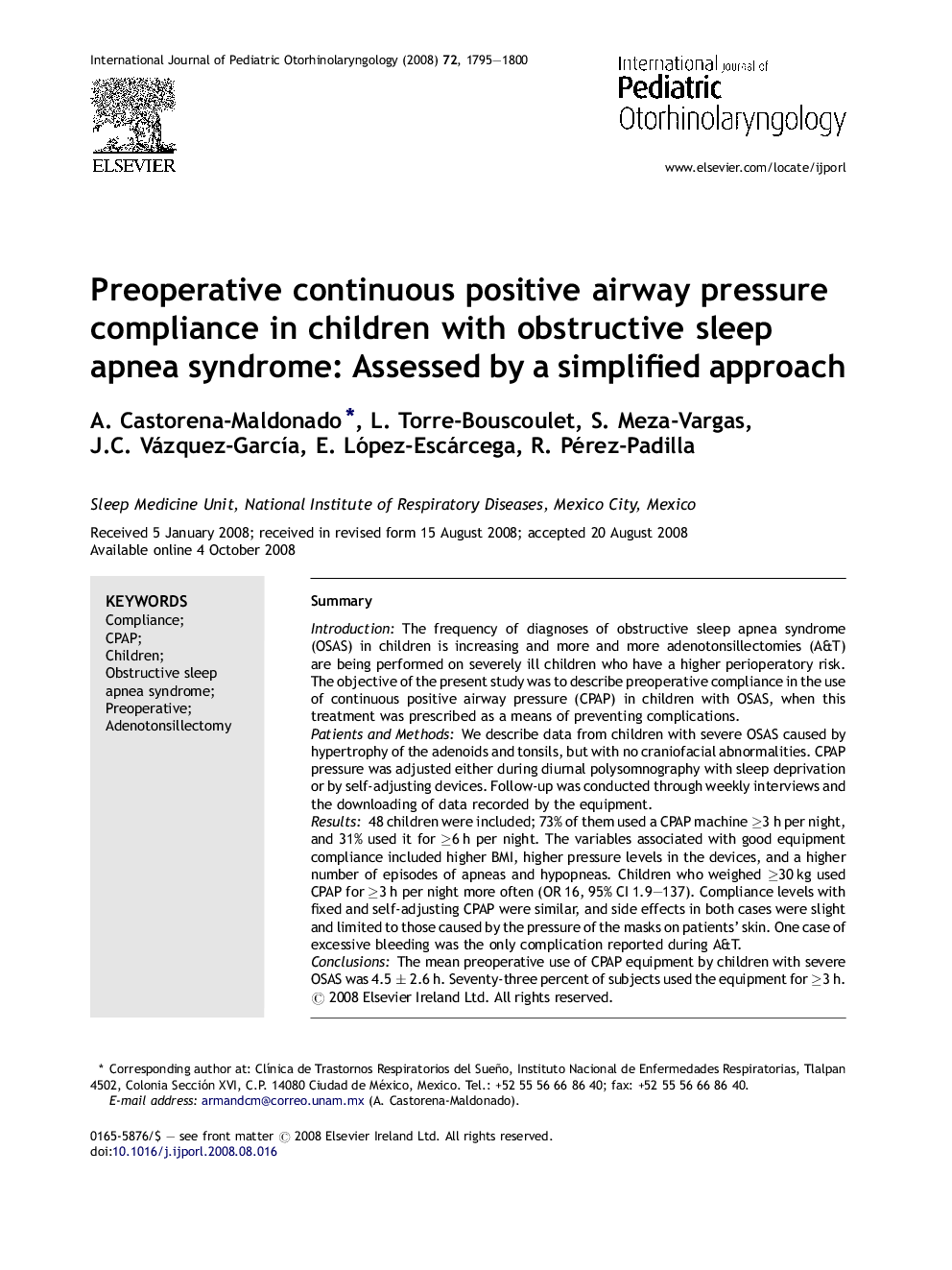| Article ID | Journal | Published Year | Pages | File Type |
|---|---|---|---|---|
| 4115479 | International Journal of Pediatric Otorhinolaryngology | 2008 | 6 Pages |
SummaryIntroductionThe frequency of diagnoses of obstructive sleep apnea syndrome (OSAS) in children is increasing and more and more adenotonsillectomies (A&T) are being performed on severely ill children who have a higher perioperatory risk. The objective of the present study was to describe preoperative compliance in the use of continuous positive airway pressure (CPAP) in children with OSAS, when this treatment was prescribed as a means of preventing complications.Patients and MethodsWe describe data from children with severe OSAS caused by hypertrophy of the adenoids and tonsils, but with no craniofacial abnormalities. CPAP pressure was adjusted either during diurnal polysomnography with sleep deprivation or by self-adjusting devices. Follow-up was conducted through weekly interviews and the downloading of data recorded by the equipment.Results48 children were included; 73% of them used a CPAP machine ≥3 h per night, and 31% used it for ≥6 h per night. The variables associated with good equipment compliance included higher BMI, higher pressure levels in the devices, and a higher number of episodes of apneas and hypopneas. Children who weighed ≥30 kg used CPAP for ≥3 h per night more often (OR 16, 95% CI 1.9–137). Compliance levels with fixed and self-adjusting CPAP were similar, and side effects in both cases were slight and limited to those caused by the pressure of the masks on patients’ skin. One case of excessive bleeding was the only complication reported during A&T.ConclusionsThe mean preoperative use of CPAP equipment by children with severe OSAS was 4.5 ± 2.6 h. Seventy-three percent of subjects used the equipment for ≥3 h.
